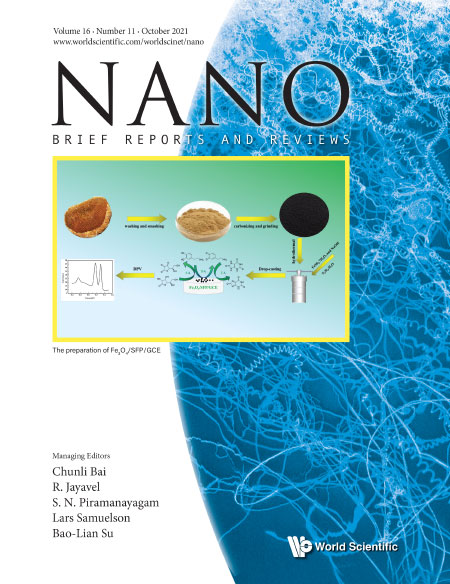Simultaneous Electrochemical Detection of Ascorbic Acid, Dopamine and Uric Acid Using the Composite Materials of Fe3O4 and Nitrogen Self-Doped Sunflower Plate-Derived Carbon
Abstract
A simple pyrolysis, activation and hydrothermal method was utilized to synthesize composite materials (Fe3O4/SFP) of ferroferric oxide and nitrogen self-doped sunflower plate-derived carbon for the simultaneous electrochemical sensing of ascorbic acid (AA), dopamine (DA) and uric acid (UA). The Fe3O4/SFP had synergistic catalytic effect on target molecules, and the oxidation peak potential of AA, DA and UA was well distinguished in the differential pulse voltammetry determination. Under the optimal conditions, the linear response ranges of AA, DA and UA are 3–150μM, 5–450μM and 15–1200μM, respectively. The detection limits of AA, DA and UA (S/N=3) are 1.0μM, 0.4μM and 1.48μM, respectively, and the sensitivity is 1.87μA⋅μM−1⋅cm−2 (3–20μM) and 0.64μA⋅μM−1⋅cm−2 (20–150μM) for AA, 3.90μA⋅μM−1⋅cm−2 (5–20μM) and 1.21μA⋅μM−1⋅cm−2 (20–450μM) for DA and 1.12μA⋅μM−1⋅cm−2 (15–100μM) and 0.31μA⋅μM−1⋅cm−2 (100–1200μM) for UA. In addition, satisfactory results have been obtained for the determination of AA, DA and UA in normal human serum, which provides a new research direction for the construction of electrochemical sensors in the future.



